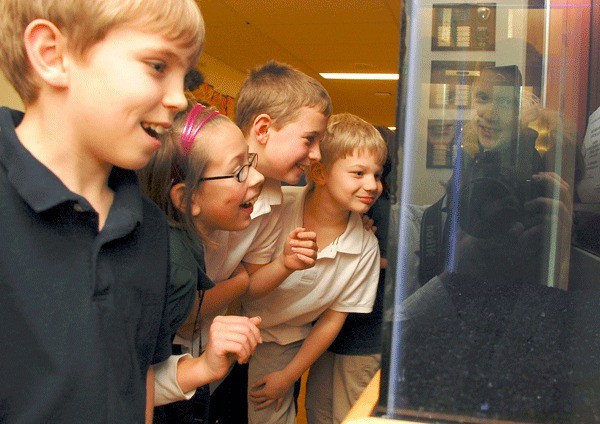Beginning next week, Oak Harbor Marina staff will once again become the proud parents of 30,000 coho salmon.
They will spend the next four months feeding them, protecting them from predators, and then sometime this June send them into the world with wishes for the best. Unlike most parents however, if they do see them again it’s with hopes that they’ll be dangling from the end of a fishing pole.
The Washington Department of Fish & Wildlife has been delivering four-inch smolt from its Marblemount hatchery every year for nearly three decades as part of a program aimed at supplementing Puget Sound fisheries with farmed salmon.
This year’s delivery of coho will arrive today, Feb. 16, at 1:30 p.m.
While the state-run program means months of extra work for marina staff, no one seems to mind. Neil Ketchum, one of those who will care for the salmon, said the program comes at no cost to the city and is an interesting process to be a part of.
Arriving by tanker truck, the coho, also known as silver salmon, are deposited into pens built tough enough to keep hungry otters at bay. They get from truck to pen via a long tube.
“They turn the crank and whoosh,” Ketchum said.
Under the marina staff’s watchful eyes, the coho will nearly double in size before they are released into the wild sometime this summer. Leaving Puget Sound, the fish will spend the next two years in the Pacific Ocean. On their third year, they will heed a silent call to return to the place where they were raised.
And that’s good news for Whidbey Island anglers, said Steve Stout, a hatchery specialist at the Marblemount facility. The pressure on “wild” salmon populations is often so intense that many fisheries are closed to all but marked or “farmed” species.
The program not only makes it possible for people to enjoy Washington’s natural resources but also provides the community with an opportunity for education as well.
“Hopefully it encourages people to learn about (hatchery salmon) and do a little fishing,” Stout said.
Taking part in this year’s delivery will be about 80 fourth-graders from Oak Harbor Elementary School. The field trip is part of “Salmon in the Classroom,” a fish and wildlife program geared toward educating youth on the life-cycle of salmon.
Students spend most of the school year raising their own coho in a fish tank, learning about their habitat, biology, and diet. Students also have the chance to learn how their actions impact the environment, fourth-grade teacher Glenda Jackson said.
Unfortunately, the state-funded program was the victim of budget cuts identified in the Washington Legislature’s special session this past December.
Jackson said it’s an unfortunate loss, as the program can have lasting impacts on students.
“Your fish tank at home has goldfish,” she said. “This is an experience many students will never have again.”
“You’re looking at future biologists,” Jackson said.



